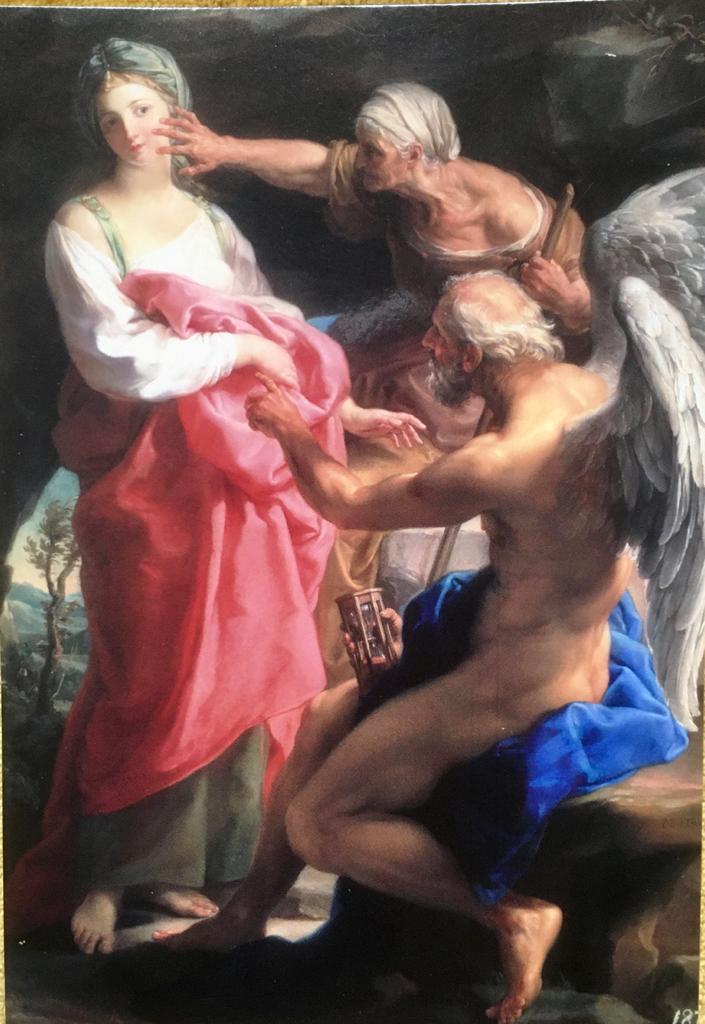
My last post was dedicated to the diary of the painter Georg Christoph Martini. In it, I stated that it was probable that Georg had been a teacher to the young painter Pompeo Girolamo Batoni of Lucca. Beyond a shadow of a doubt, Batoni was the most celebrated and famous Italian painter of portraits and allegorical and mythological subjects of the 18th century.
Batoni was born in Lucca on 25 January 1708 and died in Rome in February 1787.
In Rome, the Eternal City, he mastered the art of painting and was bestowed with many honors and accolades, and most certainly great sums of money based on the numerous and pressing requests he received for his paintings by noblemen, princes, and wealthy international and national merchants.
In his workshop, located in Via del Leone, the apprentices labored to follow Batoni’s teachings. Work was carried out methodically, as in an assembly line, in order to satisfy the many requests by noblemen and merchants who had admired this or that work of the maestro and were determined to have a copy that was all the rage for themselves. The subject chosen could be executed by Batoni himself for a noteworthy sum of money or by his apprentices for an inferior sum.
And I would now like to talk about these ‘Batonian’ paintings. Why?
Back in the year 1982, my parents and I traveled to England to relive the enchanted atmosphere we had experienced years prior in the countryside of Lewes in Sussex. Naturally, being in England, we took a trip to London and went to visit the National Gallery.
It’s common knowledge that by the end of such a visit, even the most passionate art enthusiasts feel somewhat disoriented or dazed after having seen thousands of paintings by the greatest art masters of the world. Nevertheless, toward the end, my father turned to gaze at a painting and said, “Gabri. Look. Do you recognize it?” It blew my mind. The same painting was hanging in our living room. To tell the truth, ours was, and still is, in rather poor condition. According to my father, a dishonest inept restorer, while trying to clean the painting, removed all the layers of oil paint color making the picture seem as if it were almost a monochrome…but there you are.
Did we own a Batoni?

In the catalogue of the exhibition ‘Pompeo Batoni. L’Europa delle Corti e il Grand Tour’ (The Europe of Courts and the Grand Tour), held in Lucca in 2008 – 2009, there is a detailed description of the events which led to the creation of the painting in 1747. The nobleman Giovan Battista Talenti commissioned the original work, leaving the subject entirely to the artist’s fancy. Batoni attached great importance to this particular fact.
In the catalogue, the subject is described as ‘Time orders Old Age to destroy Beauty’. Time, the aged face and bearded winged figure holding an hourglass, orders his companion Old Age, the elderly woman with a wrinkled and leathery complexion, to disfigure the face of a young woman, the personification of Beauty.
The catalogue does not mention any copies having been made. However, in addition to the painting we own, my profession as a tourist guide of Lucca has led me to find the companion piece: ‘An Allegory of Lasciviousness’ hanging in the alcove bedroom of Villa Torrigiani, Camigliano. Whereas the companion piece to the one hanging in the National Gallery, also commissioned by Talenti, is in the State Hermitage Museum of St Petersburg.
It can be deduced that the two subjects were so well-received in Lucca that another pair were commissioned and executed by apprentices or Batoni himself.
Quite the find right in my home!
Do you think this is the only surprise within my four walls? Certainly not! But I think next time, the subject will be more light-hearted. I’ll venture into another branch of knowledge and other stories regarding the beautiful territory of Lucca.
Continue to follow me!
Gabriele